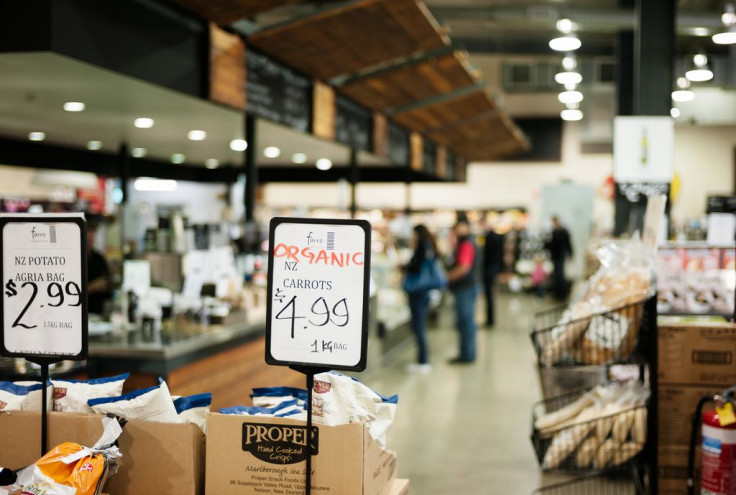Diabetes Rates Rise With Food Prices, As Healthy Options Get Too Expensive

A new study suggests blood sugar levels among people with diabetes may rise with food prices, as consumers are priced out of the healthy foods market.
Researchers from the Department of Agriculture (USDA) measured blood sugar levels in 2,400 adults with type 2 diabetes, which they compared to average grocery store prices during the previous three months in 35 U.S. markets. They found blood sugar levels rose as the costs of healthy foods such as fruits, vegetables, and low-fat yogurt rose.
"We found evidence supporting our hypothesis that people in different income groups respond differently to changes in the price of several food groups — namely, lean protein, oils and nuts, processed foods, low-fat dairy, and packaged refined grains," study author Ilya Rahkovsky wrote this month in the Journal of American Public Health.
On average, price increases in healthy foods such as lean meats and low-fat dairy brought higher blood sugar levels, whereas upticks in the price of packaged foods were associated with lowered blood sugar. The researchers identified one aberration, however, with consumer response to increases in the price of oils and nuts, foods recommended by health experts for managing blood sugar. Poorer people with diabetes were much more likely to use oils for deep frying, an unhealthy practice that nevertheless helped lower levels of blood sugar.
Like disaster relief in some foreign land, the problem may come down to just $1.50 a day, according to a December study from Harvard’s school of public health that examined the relationship between food prices and choices in 10 countries. Though chump change to middle-class Americans, such small prices drive the poor to substitute fresh fruits, vegetables, and lean proteins for the refined, packaged foods so inimical to good health. For every 10-cent jump in the per-pound cost of produce, fasting blood sugar rose 20 milligrams per deciliter — roughly 13 percent of the average fasting glucose level among those in the study. Likewise, every 14-cent per pound rise in the cost of low-fat dairy matched a nine milligram per deciliter increase in fasting blood sugar, or six percent of the average level.
"Healthy foods are more expensive, and being forced to purchase unhealthy foods, maybe for economic reasons, does have health consequences," Adam Drewnowski, director of the nutritional sciences program at the University of Washington, told Health Day. "Instead of merely advising people to consume expensive foods for better health, we ought to pay more attention to prices," he said.
Source: Anekwe, Tobenna D., Rahkovsky, Ilya. The Association Between Food Prices and the Blood Glucose Level of US Adults With Type 2 Diabetes. American Journal of Public Health. 2014.
Rao, Mayuree, Afshin, Askkan, Singh, Gitanjali, Mozaffarian, Dariush. Do Healthier Foods And Diet Patterns Cost More Than Less Healthy Options? A Systematic Review And Meta-Analysis. British Medical Journal. 2013.



























